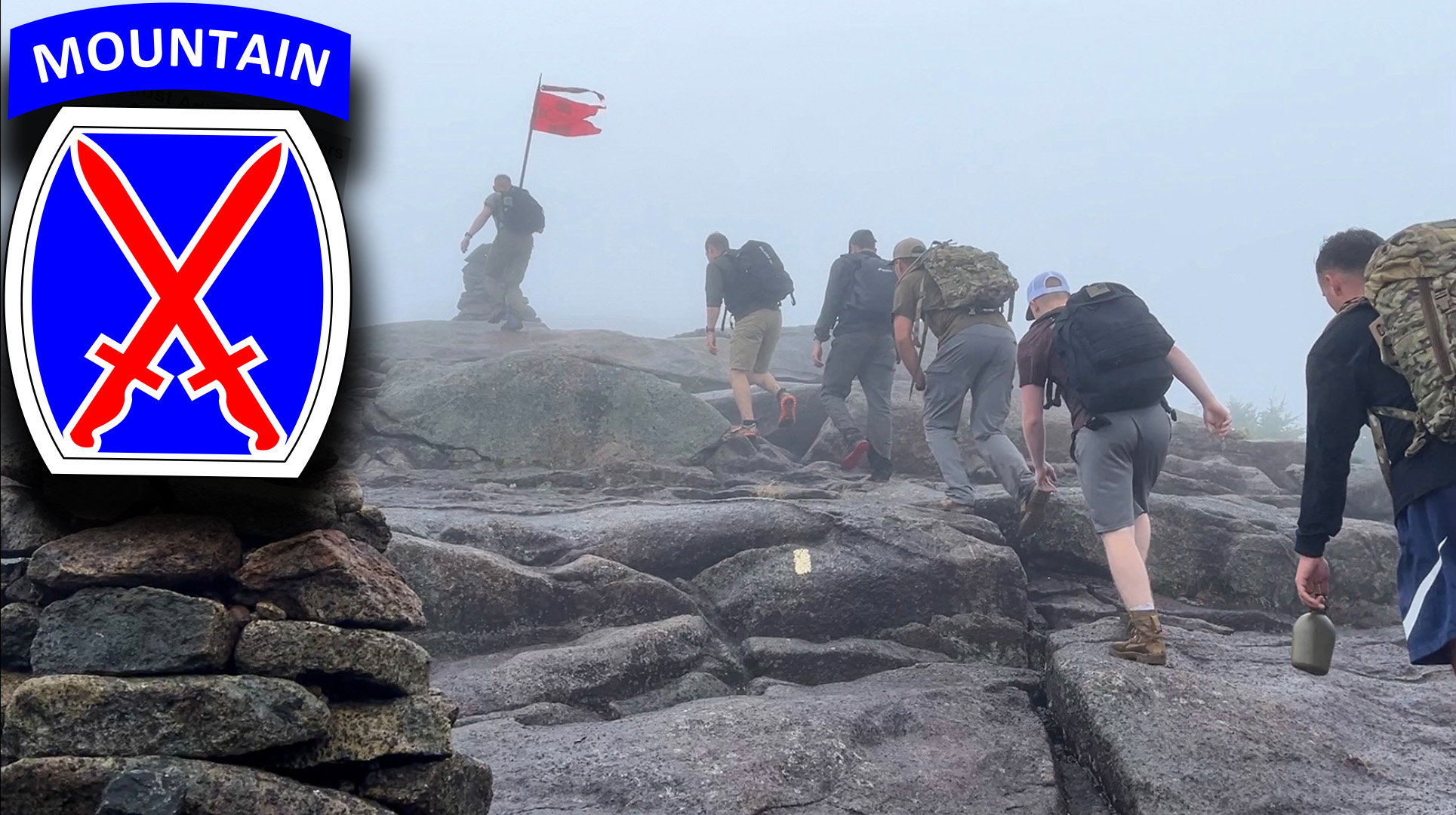

Soldiers with the Army’s 10th Mountain Division paid tribute to their unit’s World War II lineage earlier this week by climbing to the tops of all 46 highest peaks in New York’s Adirondack Mountain Range in 25 separate groups.
More than 200 soldiers took part in Operation Commando Summit on Aug. 20 and 21, marking the first time that one organization has collectively summited all 46 High Peaks in a single day, according to a news release from the 10th Mountain Division.
“This event is a poignant reminder of who we are, where we came from, and where we are headed,” Sgt. 1st Class John Pearson, with the 2nd Battalion, 14th Infantry Regiment, said in the news release. “Our heritage as mountain warriors is vital to our identity, and we embrace it fully as we look forward to the challenges that lie ahead.”
Located in northeast New York, the Adirondack Mountain Range has peaks ranging from 1,200 to more than 5,000 feet above sea level. Those that reach higher than 4,000 feet are known as the 46 High Peaks, the tallest of which is Mount Marcy at 5,344 feet. The range also includes more than 2,000 miles of hiking trails.
The 10th Mountain Division’s alpine legacy dates to a World War II campaign in the Italian Apennine Mountains. From January to May 1945, soldiers from the 10th Mountain climbed vertical cliffs between 1,700 and 2,200 feet high as they fought in the northern Italy range, ultimately destroying five German divisions and helping to force the entire German army in Italy to surrender.
One of the division’s most famous veterans was former Sen. Bob Dole (R-Kan.), who was severely wounded in April 1945. Forty years later, Dole was influential in persuading the Army to include “Mountain” in the division’s name when it was reactivated in 1985.
Subscribe to Task & Purpose today. Get the latest military news and culture in your inbox daily.
Operation Commando Summit was not only a tribute to the 10th Mountain Division’s heritage, but it also served as an important training event, said Lt. Col. D. Max Ferguson, commander of 2nd Battalion, 14th Infantry Regiment.
“Really, you learn about large scale combat operations because it forces junior leaders to operate in this decentralized and disaggregated way, where junior leaders have to make very real decisions about all sorts of things that light infantrymen need to be thinking about,” Ferguson told Task & Purpose on Friday.
Training in mountains also prepares soldiers to fight in other rugged, isolated, and austere environments because it forces junior leaders to work independently within the confines of a larger operation, Ferguson said.
Ferguson first served in the 10th Mountain Division as a company commander more than a decade ago and went on to join the 75th Ranger Regiment and 101st Airborne Division (Air Assault). He then fought to return to the 10th Mountain Division, which has been going back to its alpine roots in recent years.
He said he got the idea of 10th Mountain Division soldiers climbing all 46 Adirondack High Peaks about two years ago. The event required a lot of planning because New York state imposes several restrictions on climbing the mountains, such as that groups from a single organization cannot be within a mile of each other. There is also limited cell phone reception in the mountains.
“We had to time this like a military operation,” Ferguson said. “The only way to pull this off, to remain within the regulations required us to do – like in combat – there were naturally occurring comms blackout windows for most of the groups, where you had limited comms and you had to synchronize in time and space to make sure that we remained within the regulations. But that was a great forcing function for us, because it forced us to operate as small units in this rugged, austere, isolated terrain.”
It was a rainy and cold day when the soldiers hit the mountains. The soldiers had to be careful not to slip on any rocks. Even though it was August, weather forecasts predicted that the temperatures at higher altitude could dip below freezing, so the soldiers brought equipment for climbing on ice.
Ferguson stressed that the soldiers faced real risks in scaling the mountains, which prove Carl von Clausewitz’s axiom: “Everything is very simple in war, but the simplest thing is difficult.”
“There was nothing technically difficult about these mountains, but they will absolutely kill you or hurt you if you are not paying attention,” Ferguson said. “There are cliffs that are hundreds of feet down. You’re out in the backcountry. There are no roads, by design. There is no sign of human intrusion in that back country for sometimes dozens of miles.”
“When you go deep into that backcountry, you are alone,” he continued. “If you slip and fall out there and break your leg, you could die of hypothermia or you’re going to have to wait for good weather for the helicopter to come pick you up or the mountain rescue folks are going to have to come with a rigid litter and haul you out of their across that rugged terrain.”
The latest on Task & Purpose
- Army fires Command Sergeant Major for Military District of Washington
- Navy tells aircrews to question ‘inappropriate’ call signs after lewd flight name
- Army fires Command Sergeant Major of Fort Belvoir cyber unit
- Seeking ‘warfighter mindset,’ Air Force basic trainees now carrying rifles through boot camp
- Marine training for winter Olympics bobsled team while in Iraq
